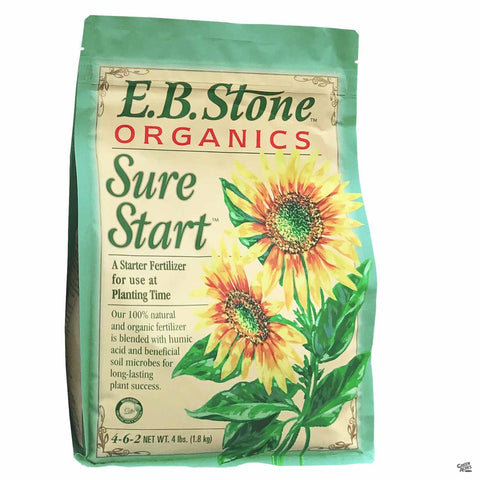
4 Ways Organic Fertilizers Help Plants Use Less Water

With changing water cycles in California, gardeners are looking for water-wise options when it comes to fertilizers. And, when it’s hot, it’s important to use products that won’t burn. Organics fertilizers are gaining momentum because they help maintain beautiful gardens without using a lot of water.
Organic fertilizer, for example, has long been promoted for its role in creating healthier soils in home gardens, but people are now realizing its water saving attributes. Here is a short list of ways organic fertilizers help plants use less water:
1. Low-Soluble-Nutrient Fertilizers Require Less Water
Some nutrients have to be in salt form to be soluble and available for plant absorption. Salt tends to attract water and when water is not available, it will extract water from the plant. This is the reason plants burn after synthetic fertilizer application.
- Organic fertilizers generally come with a lower percentage of salt than their synthetic counterparts. Therefore less water is required to dilute the fertilizer.
- Synthetic fertilizers indirectly demand excessive water because they have high concentrations of chemical nutrients which are salts. Considering that growing plants are constantly transpiring—losing water through the leaves—plants fed with organic fertilizer take in less salt, therefore, requiring less water.
2. Organic Matter Improves Water Capacity of Soil
Compost, animal manures, blood meal, etc. are components of organic fertilizers. These components increase earthworm and microorganism activity in the soil—both of which improve soil organic matter content and structure.
- Better soil structure also means better infiltration and water-holding capacity. Under such soil conditions, less water is lost through run-off and percolation.
3. Slow Release of Nutrients Regulates Plant Growth
All nutrients have to be in their inorganic form for the plants to absorb them. In the case of organic fertilizers, the nutrients are loosely bound and have to be broken down first before they become available to the plants—hence, the term “slow-release”.
Nutrients from synthetic (inorganic) fertilizers are all readily available and soluble which is convenient in the short term but can become problematic.
- Once synthetic nutrients are in the soil and watered, plants can quickly absorb them. When all conditions are favorable, plants that are fed with synthetic fertilizer (especially nitrogen-rich fertilizer) can grow at a very fast rate, almost too fast.
- While rapid results are nice, they are not easily sustained without very regular reapplication. Organics are absorbed slowly, and the byproducts last longer.
4. Mycorrhizae Extend Root Length

Some commercial organic fertilizers contain mycorrhizal inoculant including E.B. Stone Oranics’ Sure Start. Mycorrhiza is a beneficial fungus that grows symbiotically on plant roots and forms hyphae that extend way beyond the reach of the unaided roots to deliver nutrients.
- More hyphae on the surface area of plant roots means improved water and nutrient uptake.
- With successful mycorrhizal growth, plants become more tolerant to water stress. Plants can withstand drought better with mycorrhizae.
Lawn Tip
If you are looking for a slow release organic lawn fertilizer look no further than E.B. Stone Organic’s Nature’s Green Lawn Food. This blend of organic ingredients is formulated for use on all types of green lawns, won’t burn and promotes greening longer. Contains: 10% Nitrogen for greening, 1% Available Phosphate with 4% Soluble Potash all derived from Feather Meal, Blood Meal, Bone Meal and Sulfate of Potash. Also contains 1.3% Humic Acids derived from Leonardite.
